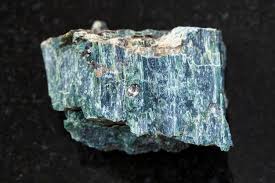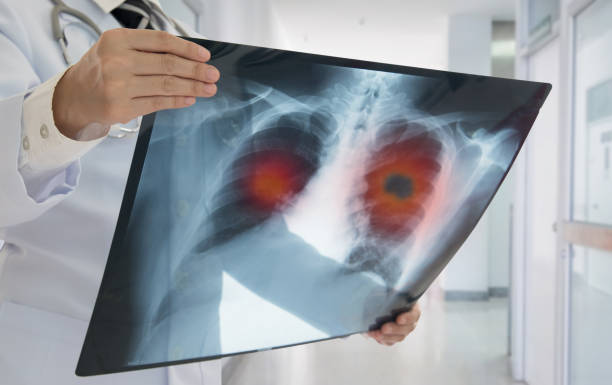Chrysotile Asbestos
Chrysotile is the most common kind of asbestos. It is a white powder used in 95% of different products in the United States. Chrysotile is a serpentine asbestos fiber that is long and curly, creating asbestos sheets.
Chrysotile asbestos exposure is a significant cause of lung cancer or mesothelioma diagnosis. The chemical compound for Chrysotile asbestos is Mg3(Si2O5)(OH)4.

What is Chrysotile?
Chrysotile asbestos, commonly referred to as white asbestos, is the most prevalent type, comprising approximately 95% of all asbestos used globally.
Known for its flexibility, strength, and heat resistance, chrysotile was historically used in various applications, including construction materials, friction products, and chemical production.
However, its adverse health effects, particularly its role in asbestos-related diseases, have raised serious concerns about its use.
Chrysotile belongs to the serpentine group of asbestos minerals, characterized by curly, fibrous structures that distinguish it from the needle-like fibers of amphibole asbestos.
Despite being the “common type” of asbestos, chrysotile poses significant health risks, including mesothelioma, lung cancer, and other asbestos-associated diseases.
Types of Asbestos and Chrysotile’s Role in Industry and Health

Asbestos is a naturally occurring mineral that exists in two primary forms: serpentine and amphibole. These forms differ in their structural properties and associated health risks.
Chrysotile, the only member of the serpentine group, is characterized by its curly, flexible fibers, making it suitable for weaving and integration into various products.
On the other hand, amphibole asbestos, which includes types such as amosite and crocidolite, has straight, needle-like fibers.
While both forms of asbestos are hazardous to human health, chrysotile’s extensive industrial use has made it the focus of most studies and regulations.
Forms and Applications of Chrysotile Asbestos
Chrysotile’s adaptability has led to its use in various industries, often in combination with other materials. Key applications include:
Friction Materials
Chrysotile asbestos has been a key component in brake pads, clutch linings, and gaskets, especially in the automotive industry. Due to its heat resistance and durability, aftermarket products, such as automotive chrysotile asbestos-containing brakes and linings, relied heavily on this mineral.
However, these materials, when worn down, can release fine particulate matter containing asbestos fibers into the air, increasing the risk of exposure for mechanics and drivers.
Construction Products
In the construction industry, chrysotile was extensively used in roofing materials, cement, and insulation due to its strength and fire-resistant properties. Many buildings constructed before the 1980s still contain chrysotile in their bulk form, embedded in these materials.
The cost impacts of removing asbestos from older structures can be significant, but the alternative of leaving these materials in place often poses an unreasonable risk to occupants.
Chemical Production
Chrysotile played a vital role in industrial processes such as chlor-alkali production, where it was used in gaskets and diaphragms. These chrysotile asbestos diaphragms provided the necessary durability to withstand chemical reactions.
However, studies have linked exposure during production to adverse health effects, particularly in chrysotile miners and factory workers.
Health Impacts of Chrysotile Exposure

Risk of Mesothelioma and Lung Cancer
Exposure to chrysotile asbestos has been strongly associated with malignant mesothelioma, a rare and aggressive cancer of the lungs, abdomen, or heart lining.
Studies by researchers like McDonald et al. and Bernstein DM have highlighted how even minimal exposure to chrysotile fibers can significantly increase the risk of lung cancer and laryngeal cancers.
The content of lung samples taken from exposed individuals often shows high concentrations of chrysotile asbestos, reflecting the mineral’s persistence in human tissue.
Fibrosis and Respiratory Diseases
Chrysotile exposure can lead to interstitial fibrosis, a condition where lung tissue becomes scarred, reducing its ability to function properly. The resulting respiratory conditions, such as asbestosis, often manifest as shortness of breath, persistent cough, and pleural thickening.
Studies like those by Gibbs AR, Berry G, and Tomatis M have further documented the progression of asbestos-related diseases, emphasizing the role of inflammatory responses in exacerbating health outcomes.
Comparing Chrysotile and Amphibole Asbestos
While chrysotile is the most commonly used asbestos type, its health risks are often compared to those of amphibole asbestos. Amphiboles, such as crocidolite, are considered more hazardous due to their long, rigid fibers, which are more likely to penetrate lung tissue and cause lasting damage.
Studies published in journals like Ann Occup Hyg and Occup Environ Med have examined the asbestos fiber content in lung tissue, finding that both forms contribute to disease but through slightly different mechanisms.
Particulate Matter and Additional Exposures
Both chrysotile and amphibole asbestos can release particulate matter into the air when disturbed.
While occupational exposures in industries like construction and automotive manufacturing are well documented, environmental exposures—such as living near asbestos mining sites—pose an additional risk, particularly in developing regions.
Economic and Regulatory Considerations
Cost Impacts and Public Policy
The annualized costs of managing asbestos-related risks, including removal, replacement, and healthcare, are significant.
Regulatory agencies worldwide, including the Environmental Protection Agency (EPA) in the United States and counterparts in Europe, have implemented strict measures to phase out asbestos-containing products.
Public consultations and comment periods have further shaped policies aimed at protecting workers and the public.
Challenges in Chrysotile Regulation
Despite widespread recognition of the risks, industries reliant on chrysotile argue for its controlled use, citing its affordability and unique properties.
However, the hierarchy of controls—elimination, substitution, engineering controls, and personal protective equipment—remains the preferred approach for reducing exposure.
Safer Alternatives to Chrysotile
The push for safer alternatives has led to the development of non-toxic substitutes, such as:
- Cellulose Fibers – Used in insulation and construction.
- Fiberglass – Widely applied in building materials.
- Synthetic Diaphragms – Replacing chrysotile in chemical production.
These alternatives minimize health risks while maintaining functionality, offering long-term solutions for industries transitioning away from asbestos.
Health Risks of Chrysotile Exposure

Adverse Health Effects of Chrysotile Asbestos
Exposure to chrysotile asbestos has been linked to a range of asbestos-associated diseases, including:
- Malignant Mesothelioma: A rare but aggressive cancer that affects the lining of the lungs (pleural mesothelioma), abdomen, or heart.
- Lung Cancer: Prolonged exposure significantly increases lung cancer risks, particularly in those with occupational exposures.
- Asbestosis: A chronic condition caused by fibrosis or scarring of lung tissue due to inhaled asbestos fibers.
- Pleural Plaques and Thickening: These conditions result from asbestos fibers lodging in the pleural cavities, leading to respiratory issues and shortness of breath.
Chrysotile fibers can persist in the human lungs for years, causing inflammatory and pathological responses.
Studies by researchers like McDonald AD, McDonald JC, and Bernstein et al. have documented the long-term health impacts of chrysotile exposure, including pleural thickening and pulmonary fibrosis.
Occupational and Environmental Exposures
Occupational exposures remain the leading cause of asbestos-related diseases. Workers in industries such as construction, automotive manufacturing, and chemical production are at the highest risk.
Environmental exposures also pose an unreasonable risk, especially in areas where raw asbestos is mined or processed.
Production and Applications of Chrysotile
Raw Materials and Production
Chrysotile asbestos is mined and processed into a variety of products. It has historically been favored for its unique properties, such as resistance to heat, chemicals, and wear. However, its mining and production have come under scrutiny due to its health hazards.
Common Uses of Chrysotile Asbestos
The versatility of chrysotile has led to its use in:
- Chrysotile Asbestos-Containing Brake Blocks and Sheet Gaskets: Widely used in automotive and industrial applications.
- Gaskets for Chemical Production: Especially in chlor-alkali production processes.
- Chrysotile Asbestos Diaphragms: Integral to certain industrial processes but now subject to stricter controls.
Despite its effectiveness as a raw material, chrysotile asbestos is being phased out globally due to its harmful effects.
Regulatory Measures and Global Impact
Europe and North America
Europe has led the charge in banning chrysotile asbestos, with countries like the United Kingdom and those in Central and Eastern Europe implementing strict regulations.
In North America, the United States Environmental Protection Agency (EPA) and Canada have introduced measures to control or ban the use of asbestos-containing products.
Interim Workplace Controls
Efforts to reduce exposure include interim controls, such as improved ventilation, protective equipment, and restricted access to areas with asbestos-containing materials.
Public Comments and Global Advocacy
The international community has voiced strong opposition to the continued use of chrysotile. Public comments during regulatory discussions highlight the need for safer alternatives and better workplace protections.
The Hierarchy of Controls for Asbestos
Managing the risks associated with chrysotile involves implementing the hierarchy of controls:
- Elimination: Phasing out chrysotile asbestos from production and use.
- Substitution: Using safer alternatives like cellulose fibers, fiberglass, or polyurethane foams.
- Engineering Controls: Ensuring proper ventilation and containment of asbestos fibers.
- Administrative Controls: Providing training and implementing safety protocols.
- Personal Protective Equipment (PPE): Equipping workers with respirators and protective clothing.
These measures aim to reduce the risk of asbestos-related diseases and protect human lungs from exposure.
Protect Yourself from Chrysotile Asbestos Risks
Understanding the risks of chrysotile asbestos is crucial for protecting your health and the environment.
If you suspect the presence of asbestos-containing products in your home or workplace, act now. Consult certified professionals for testing, removal, and safe disposal of asbestos materials.
We specialize in asbestos detection and abatement services. Our team of experts provides comprehensive solutions, from identifying asbestos-containing products to implementing interim controls and ensuring safe removal.
Contact us today to learn how we can help you mitigate asbestos risks and create a safer living or working environment.
